Zagreb's ZET to Introduce New Timetable as Changes Take Place
March the 14th, 2022 - Some changes are coming to Zagreb's ZET public transport system owing to global logistics chains and there will be some alterations in the timetable as a result.
As Poslovni Dnevnik writes, as of today (Monday the 14th of March) ZET will be introducing a new timetable for the capital city's means of public transport that will reduce the number of departures on most tram lines and thirteen bus lines.
To be more precise, all of the current tram lines except 1, 5, 8 and 15 will be running less often. Line 4 will, for example, instead of every 7-8 minutes from the turnoff, leave every 8-9 minutes, meaning that in one hour there will be five to six departures instead six to seven.
This new ZET timetable, they say, is being introduced due to "global circumstances affecting supply and logistics chains". You can see the new timetable by clicking here.
A new schedule for ZET departures will also be applied in bus traffic, but only on lines 109 (Crmomerec - Dugave), 115 (Ljubljanica - Spansko - Jankomir), 118 Trg Mazuranica - Voltino), 121 (Crnomerec - Karaznik - Gajnice), 125 (Crnomerec - Gornje Vrapce), 172 Zagreb (Crnomerec) - Zapresic, 212 (Dubec - Sesvete), 224 (Dubec - Novoselec), 226 (Kaptol - Remete - Svetice), 231 (Borongaj - Dubec), 232 (Dubrava - Cret) ), 269 (Borongaj - Sesvetski Kraljevec) and 281 (Central Station - Novi Jelkovec) as was reported from ZET.
For more, make sure to check out our dedicated lifestyle section.
Seeing as you're already reading about tram and bus lines in the Croatian capital, why not have a look at just where they can take you? Check out Zagreb in a Page.
British Ambassador Puts in Service "Climate Tram" No. 13 in Zagreb
ZAGREB, Dec 12, 2020 - British Ambassador Andrew Dalgleish formally put in service the so-called climate tram No.13 in Zagreb on Saturday, on the occasion of the fifth anniversary of the conclusion of the Paris Climate Agreement.
The tram promoting 2021 United Nations Climate Change Conference, also known as COP26, which will be held in Glasgow next year, will be in operation in the Croatian capital in the next six months.
During the ceremony, the ambassador said that his country was making preparations for the conference in that Scottish city in 2021.
We hope that Glasgow event will bring together world leaders who will make real and concrete promises on greenhouse gas reduction so as to halt dangerous climate change, said the diplomat.
He also pointed out that commuting by tram is an excellent, environmentally-friendly mode of transport.
There is the QR code on the tram leading to the website https://ukcop26.org/ with information on all activities aimed at climate change prevention and on the next year's conference in Glasgow.
The Paris Agreement, a legally binding international treaty on climate change, was adopted by 196 Parties at COP 21 in Paris, on 12 December 2015, and entered into force on 4 November 2016. Its goal is to limit global warming to well below 2, preferably to 1.5 degrees Celsius, compared to pre-industrial levels. To achieve this long-term temperature goal, countries aim to reach global peaking of greenhouse gas emissions as soon as possible to achieve a climate neutral world by mid-century.
During today's ceremony, the British ambassador welcomed the announcement that US President-elect Joe Biden will reenter the U.S. into the Paris Climate Agreement. The move will ensue after President Donald Trump formally withdrew the USA from the climate change agreement on Nov. 4.
Zagreb Trams - Iconic and Integral to Life in Croatia's Capital
November 20, 2020 – Today is the 20th anniversary of the completion of the Zagreb trams network. Namely, on this day in 2000, the last current line from Jarun to Prečko was opened. To celebrate, we take a look at the iconic, blue trams of Zagreb
It's all too easy to take for granted the things you see every day. That's certainly true of city residents in their feelings for Zagreb trams. As it currently stands, the Zagreb trams network was completed on 20th November 2000, when the existing line to Jarun was further extended to Prečko, which lies to the west of the city centre. In the two decades that have followed, Zagreb trams have cemented their place as an icon of the city, have helped changed the cityscape of Zagreb and have facilitated the friendships, education, careers, relationships and businesses of the Croatian capital over millions of journeys. All without much fanfare or celebration.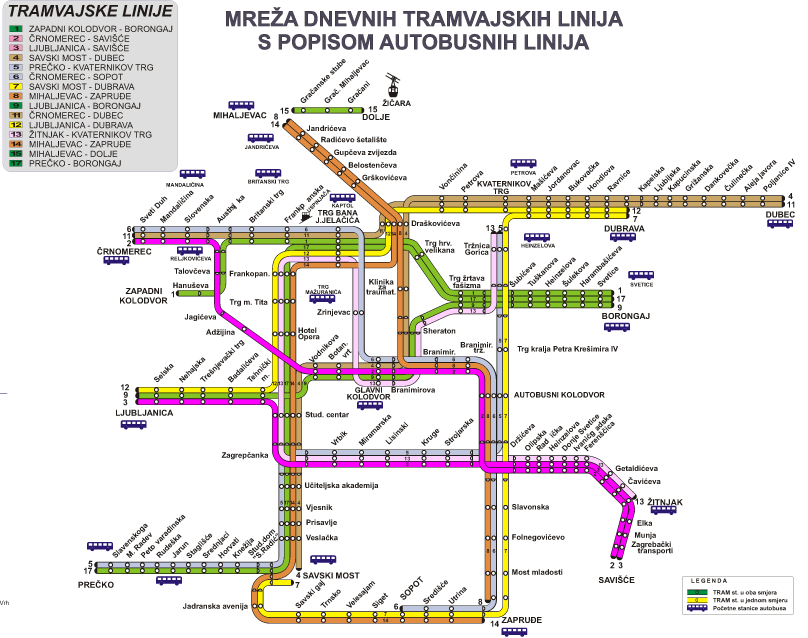 The Zagreb trams network
The Zagreb trams network
The Zagreb trams network consists of 15 lines which connect suburbs as far west from the centre as Prečko (8 kilomtres), as far east as Dubec (8 kilometres), north to Mihaljevac (3 kilometres) and south to Avenue Dubrovnik in Novi Zagreb (an additional line, running further south to Velika Gorica, servicing Zagreb Franjo Tudman airport, is planned). Throughout the night, four lines remain, connecting essential workers, night-time workers and late-night revellers (although they are sometimes replaced by night buses due to maintenance works).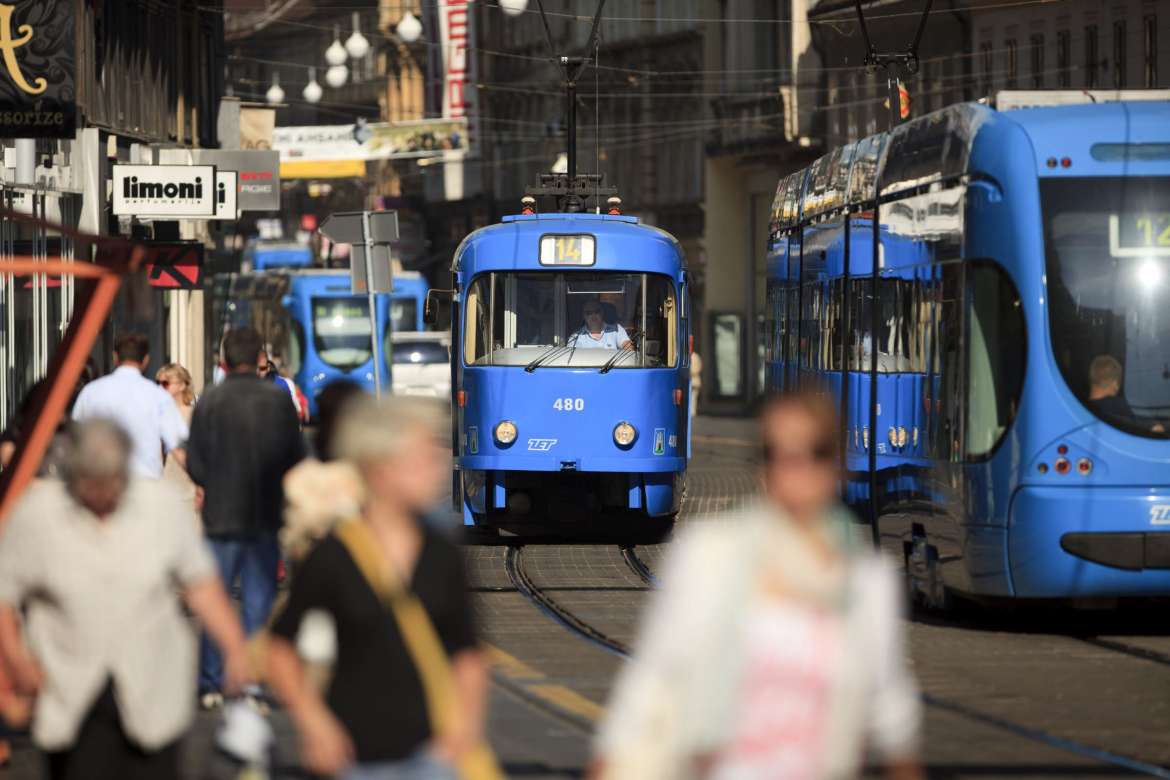 © Romulić & Stojčić
© Romulić & Stojčić
The completion of the line to Prečko catalysed the expansion of the westerly-lying suburbs of Špansko and Prečko. The change visited upon the rest of the city by the Zagreb trams network has been no less fundamental. Certainly, at weekends, Zagreb can confidently claim to be a 24-hour city because of its trams. Day or night, no place within the city suburbs is too far to reach because of Zagreb trams.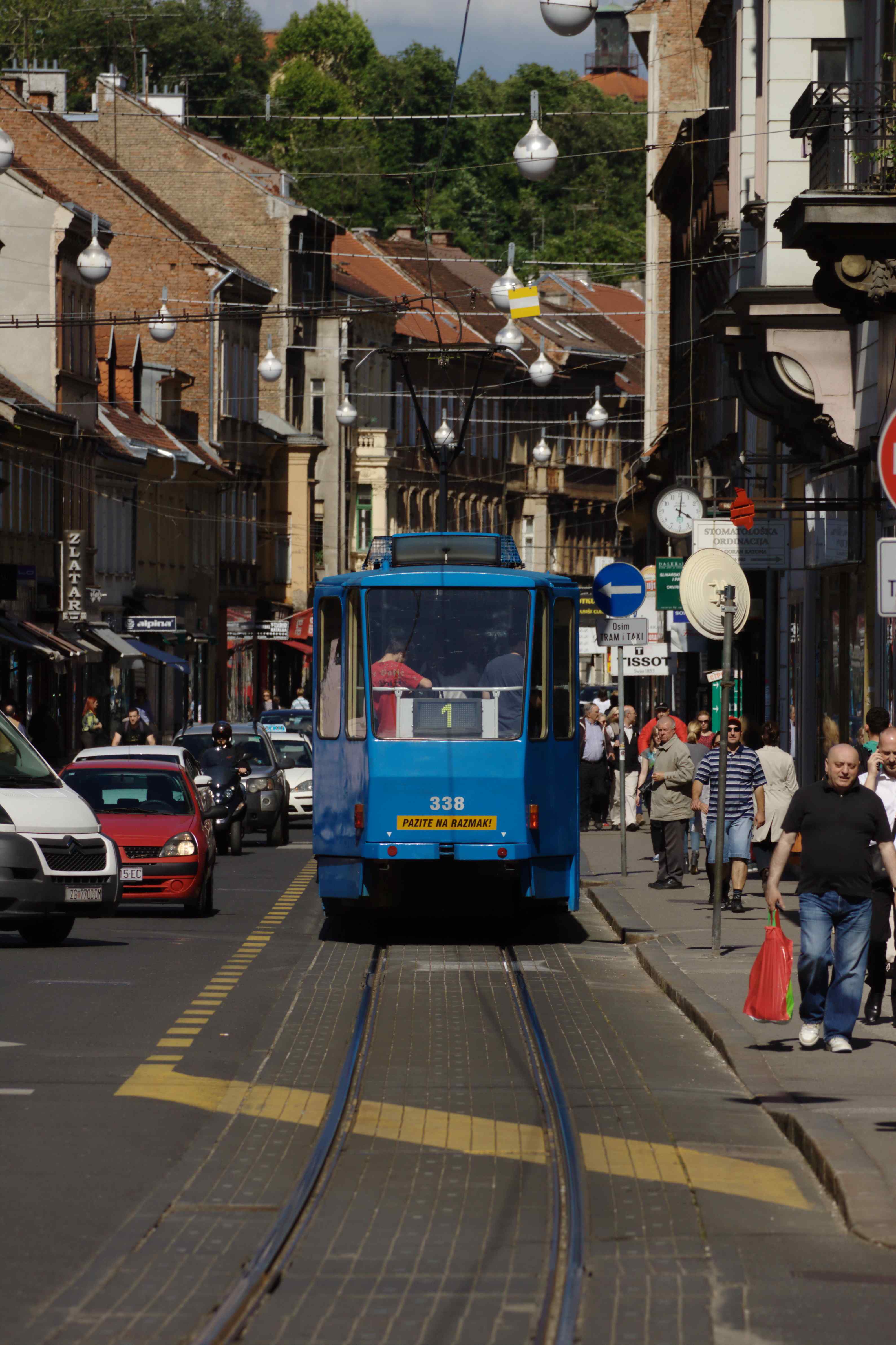 © Aktron / Wikimedia Commons
© Aktron / Wikimedia Commons
So reliable and well used are Zagreb trams that it's perhaps understandable why they are sometimes taken for granted. Whole generations now living in the city do not even know a Zagreb without a tram network. Its importance to all was put into sharp focus during the early part of 2020 when the Zagreb trams network was temporarily closed in response to the COVID-19 pandemic. Perhaps only then was the true scale of integration between Zagreb trams and the lives of city residents truly recognised. 'You don't know what you've got 'til it's gone.'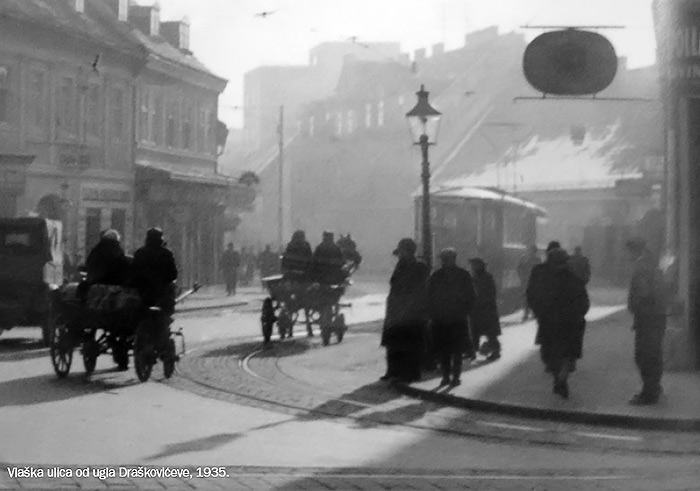 Zagreb trams on the corner of Vlaška and Draškovićeva streets in 1935 © Public domain
Zagreb trams on the corner of Vlaška and Draškovićeva streets in 1935 © Public domain
Lest we forget to give credit where credit is due, here are some interesting facts about Zagreb trams.
The Zagreb trams network was started in 1891 with the opening of the first line. Back then, the trams were pulled by horses - the electric tram didn't debut in Zagreb until 1910. The first journey started at the site of today's Technical Museum and the first track ran for some 8-kilometres. So fascinated were Zagreb residents with the introduction that some 20, 000 passenger journeys were made on the second day. The population of Zagreb at the time was 40, 000.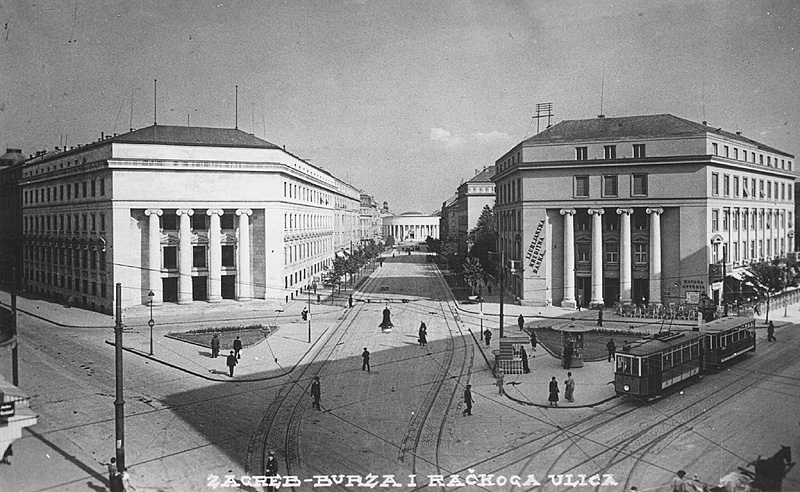 The route from Draškovićeva to Džamija in the 1930s © HappyV
The route from Draškovićeva to Džamija in the 1930s © HappyV
Osijek in Slavonia, east Croatia, was the first city in the country to have trams. The first international railway line into Croatia was built to facilitate holidays on the Kvarner coast, but the rail line ended in Rijeka. The upper echelons of Austro-Hungarian society who took this train were transported to their preferred destination – Opatija – by tram.
The most-modern low floor trams that now run in Zagreb were introduced in 2005.
There are two separate tram stations in Zagreb which have the same name – there are Heinzelova stations on the lines both to Savišće and Borongaj. The view from Džamija up to Draškovićeva and the cathedral in 1947 © Romák Éva
The view from Džamija up to Draškovićeva and the cathedral in 1947 © Romák Éva
The Zagreb trams network has 116.3 kilometres (72.3 miles) of metre gauge track. It is the same track all over the city, except for the line which runs north to Mihaljevac, which is unique. This line is both the fastest and the shortest in the Zagreb trams network. It services some of the most desirable Zagreb suburbs in which to live. But, of course. The inclusion of the Mihaljevac line brings the track total to 120 kilometres.
Children under the age of six do not require a ticket to ride on Zagreb trams.
There are six different types of tram currently running on the network. Zagreb residents have given nicknames to different models over the years – Đuro was named after a factory that made it, Bik, meaning bull, got its name because it was stronger than older models, Čeh was named after Czechoslovakia, the country where it was produced, Katica, Genšer and Zeko meaning bunny. Everyone likes the most modern trams in summer, because they have air conditioning but, in winter, city residents greet with joy the approach of older models on their route – the seats are heated to a toasty temperature.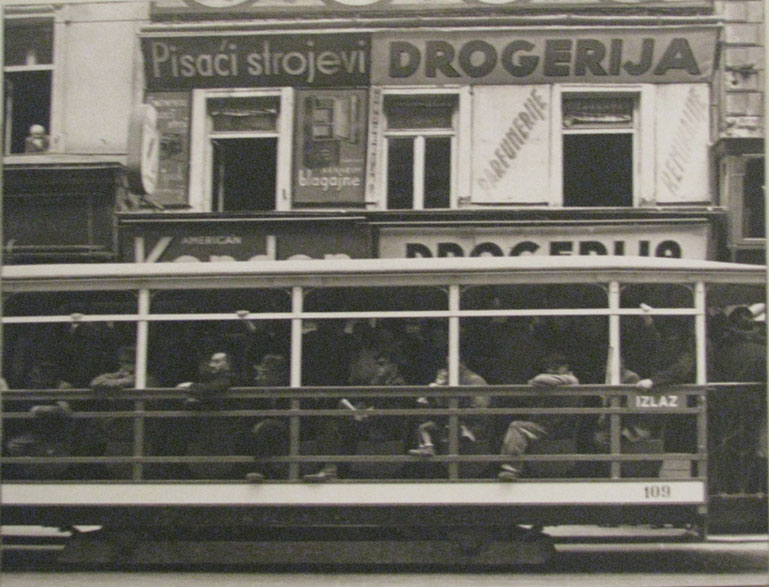 A photograph of how the open carriages of Zagreb trams used to look. The original of this photograph can be found in © Zagreb City Museum
A photograph of how the open carriages of Zagreb trams used to look. The original of this photograph can be found in © Zagreb City Museum
The longest single direction journey you can make on Zagreb trams is between Prečko in the west of the city and Dubec in the east. The journey takes around 76 minutes. You have to change tram only once to make this journey.
Apart from being the most environmentally friendly motorised public transport option in the city, the trams have massively contributed to Zagreb being a modern eco-friendly capital. Many city tram networks run down the middle of roads. While some lines in Zagreb are also placed here, many instead run at the sides of roads. This positioning – plus the way the lines sit in the road – make them problematic for cyclists. And this is partially the reason why Zagreb has 220 kilometres of dedicated cycle paths which exist not on the roads, like in other cities, but on the pavements.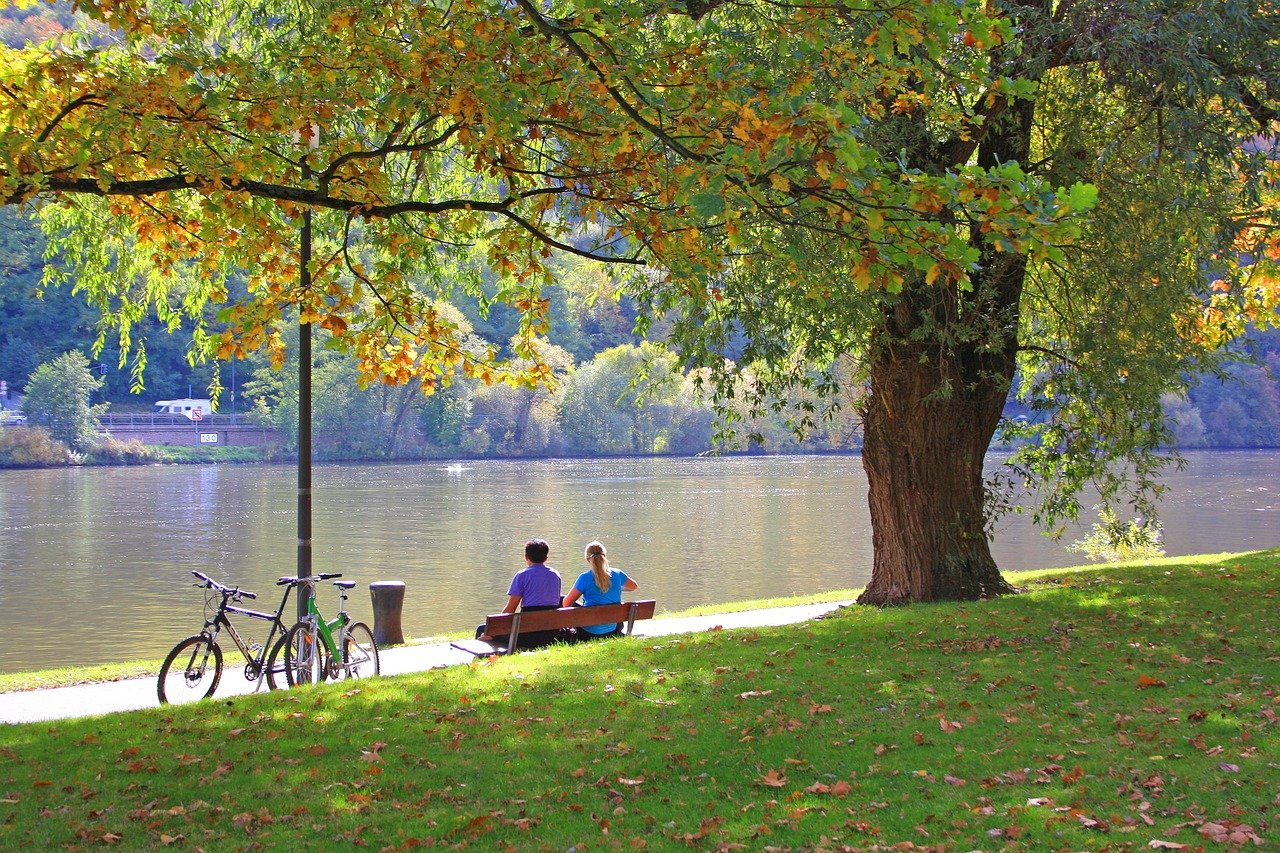 Zagreb's generous 220 kilometres of dedicated cycle paths come partially as a result of the positioning and construction materials of the Zagreb trams network © G Schneider
Zagreb's generous 220 kilometres of dedicated cycle paths come partially as a result of the positioning and construction materials of the Zagreb trams network © G Schneider
One of the world's worst tram accidents happened in 1954 on the Zagreb network. The tragedy took place on the old, steep stretch running near Mirogoj cemetery. Nineteen passengers were killed and thirty seven were severely injured.
During the day, each line runs on average every 5–10 minutes. Almost all stations on the Zagreb tram network sit on at least two lines.
Zagreb's tram network transported 204 million passengers in 2008.
A few years ago, the lowest fare tram ticket was 10 kuna. Zagreb trams were then often ridden by people without a ticket (and still are). The company who runs the tram network, ZET, decided to decrease the price of the lowest ticket to 4 kuna. Since doing so, many more people buy a ticket for Zagreb trams. You can travel for 30 minutes on any tram or trams with a 4 kuna ticket.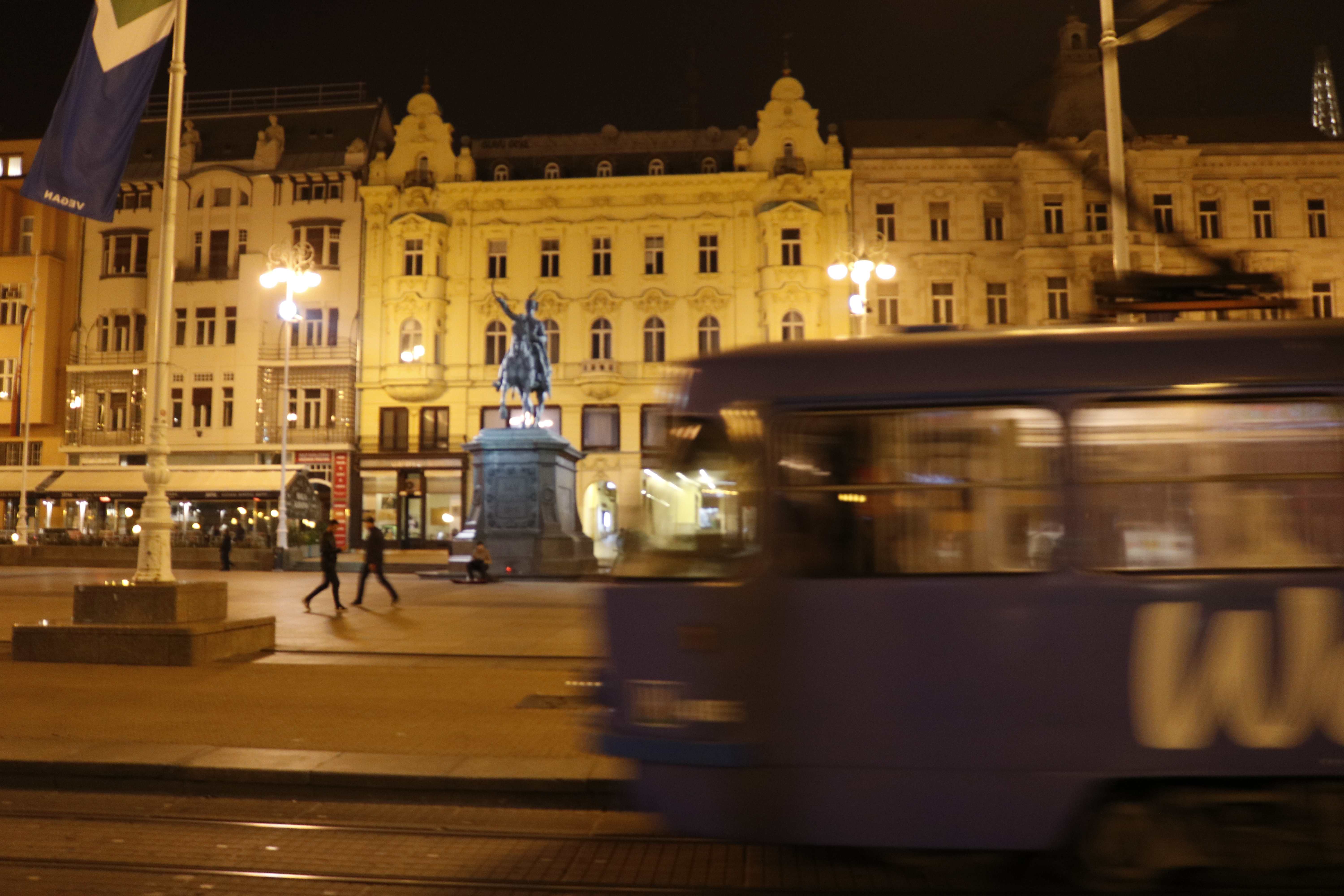 © Marc Rowlands
© Marc Rowlands
All uncredited photographs courtesy © ZET
Zagreb Streets Friendly For Feet - It's European Car Free Day Tomorrow
ZAGREB, September 21, 2020 - Residents and visitors to the Croatian capital will tomorrow learn how Zagreb street life was historically, as the city centre banishes almost all vehicles for European Car Free Day
What would Zagreb's residents of the past think of the city if they saw it today? The Croatian capital's boundaries now extend many kilometres into the surroundings, the huge Sava river is no longer any impediment to travel. The people of the city now live on both sides. Skyscrapers score the sky and well over half a million people can be seen on its streets, roads and highways.
Apart from the size and the unfamiliar building materials, the biggest shock would probably be the speed of the city. Buses and cars race down multiple-lane avenues and trams take you into almost every neighbourhood you'd want to visit. Kaptol, Zagreb in 1905, when almost every day looked like European Car Free Day
Kaptol, Zagreb in 1905, when almost every day looked like European Car Free Day
Tomorrow, Zagreb will return to a pace more familiar to former inhabitants as the city observes European Car Free Day. Motor vehicles will be banned from much of the city's centre between 8 am and 8 pm.
The area of the city centre observing European Car Free Day has the following boundaries; Trg bana Josipa Jelačića - Jurišićeva - Palmotićeva (western edge) - Boškovićeva (northern edge) - Hebrangova (northern edge) - Gundulićeva (eastern edge) - Ilica (northern edge) - Mesnička (eastern edge to Streljačka) - Mesnička - Demetrova - Ilirski trg - Radićeva - Trg bana Josipa Jelačića.
These streets form some of the oldest parts of Zagreb. Long have they been trodden by the pedestrians to whom they'll return tomorrow. Those travelling into the centre by car must park on the outskirts and take public transport into the heart of the city. Trams, taxis and buses will operate as normal.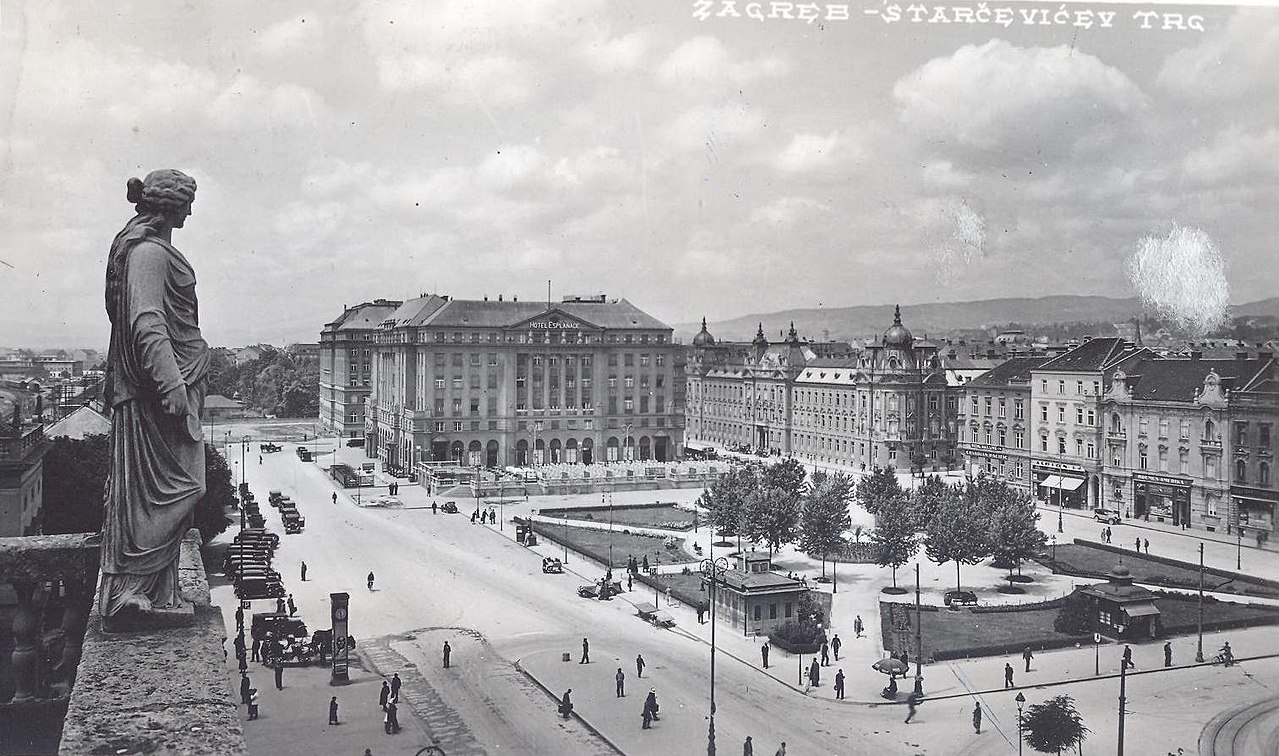 Cars began to be seen more regularly in Zagreb during the first half of the 20th-century. Not so much a European Car Free Day as a Croatian Tram Free Day - the city's famous tram network wasn't nearly so developed back then. The first city in Croatia to have trams was actually Osijek, who introduced a horse-pulled tram network in 1884.
Cars began to be seen more regularly in Zagreb during the first half of the 20th-century. Not so much a European Car Free Day as a Croatian Tram Free Day - the city's famous tram network wasn't nearly so developed back then. The first city in Croatia to have trams was actually Osijek, who introduced a horse-pulled tram network in 1884.
The observance of car-free days is actually over 65 years old, although originally they were introduced in response to oil crises, not for environmental reasons. The more modern reason for having such days is to return city streets to pedestrians. Car-free days have taken place independently in European nations since the mid-1990s, and it 2000 they became aligned on the fixed date of 22 September. European Car Free Day is also a car-free day in many other countries outside of Europe, although this continent is the only one to currently observe it throughout its boundaries.
All uncredited photos lie within the public domain.
For the latest travel info, bookmark our main travel info article, which is updated daily.
Read the Croatian Travel Update in your language - now available in 24 languages
Zagreb Could Get New Section of Tram Line for First Time Since 2000
As Poslovni Dnevnik writes on the 16th of September, 2019, the idea, according to the City of Zagreb's administration, has already been decided upon, and now the likely incredible amount of paperwork on the matter, worth about 300 thousand kuna, must be resolved.
First, they will build an additional line, expand car parking availability, and then ''pull'' a new track from Florijan Andrašec street to Trešnjevački trg (square), Vecernji list writes.
If they manage to hurry up with the project, it could be the first few brand new metres of track to be constructed in the City of Zagreb since the year 2000, when the last piece of track that was constructed reached Prečko, but for now, Zagreb is just looking for a company to conduct the main part of the implementation project for the reconstruction of the track on Vukovarska street along the aforementioned part of the tram tracks.
The work would involve about five hundred metres or so of road. The decision, according to Zagreb's city government, has already been made, and now the previously mentioned papers, all of which are worth around 300,000 kuna in total, must be deal with and things resolved in order to obtain the necessary building permit for the planned works.
Following the issuing of the building permit, the works will then take place in three phases, and in the first phase an additional track will be constructed on the south side of Vukovarska street. It will also house a new southern pavement/walkway and an accompanying bike path, as well as move some of the utility infrastructure installations.
After that, during the second phase of the works, a car park will be built, which will be expanded by 35 additional parking spaces. The third phase will be the construction of a new water supply system.
Make sure to follow our dedicated lifestyle page for much more. If it's just Zagreb you're interested in, give Total Zagreb a follow or check out Zagreb in a Page for all you need to know about the Croatian capital.
ZET Revenue Plummets Due to 4-Kuna Ticket
The company's revenue in the first six months of 2017 was HRK 20 million lower than in 2016.


